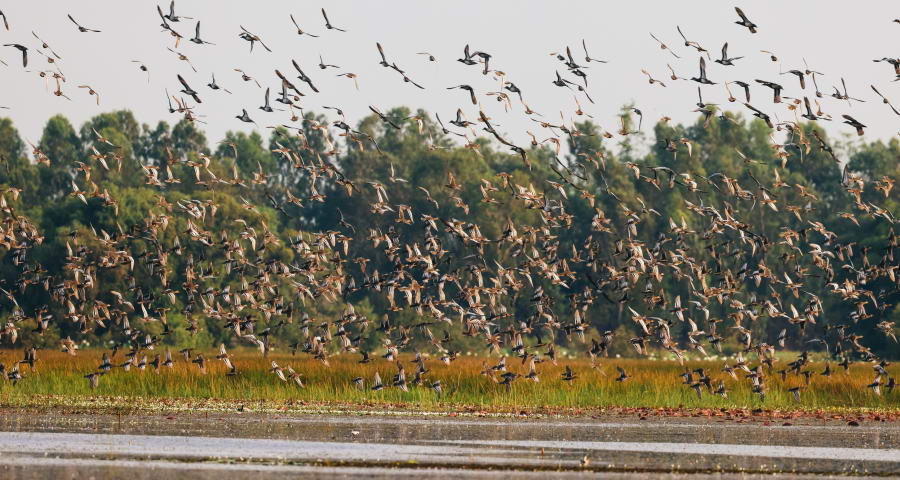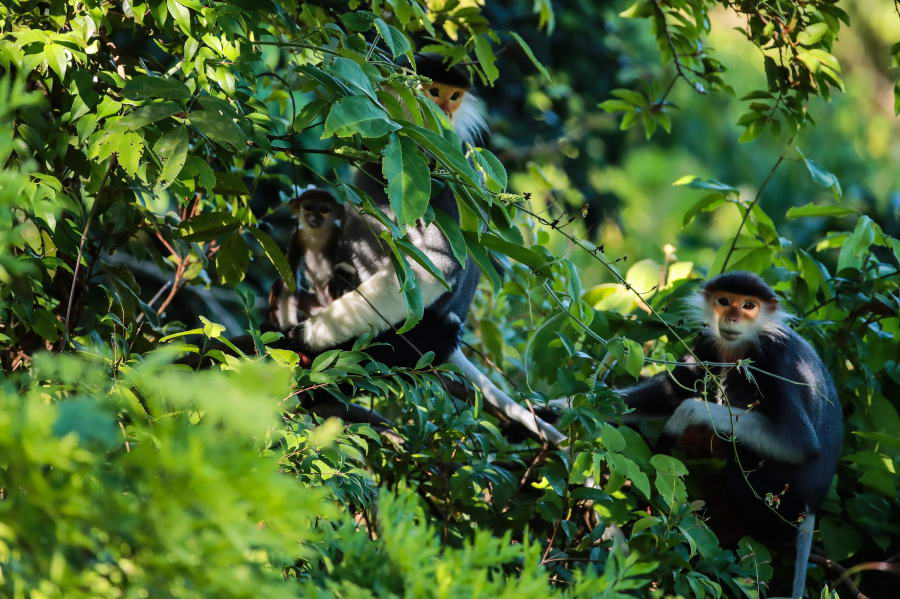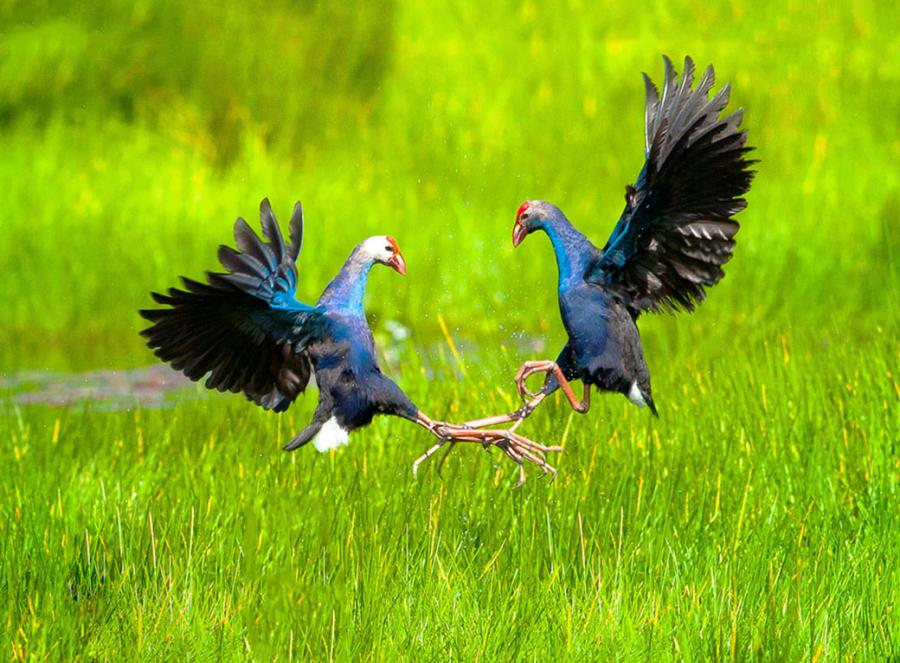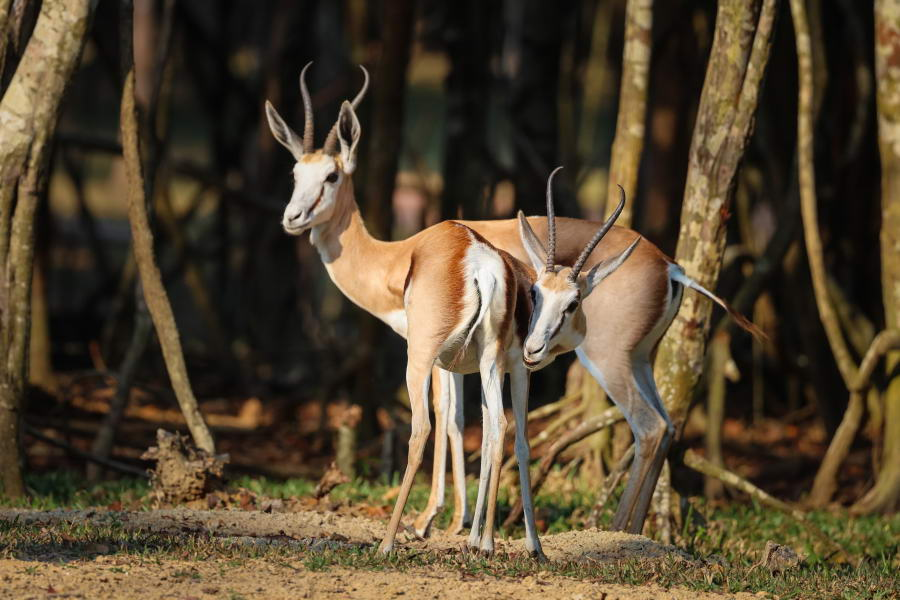
Discover The Top 5 Places to See The Most Authentic Wildlife
Vietnam has a diverse flora and fauna system, ranking among the countries with the highest biodiversity in the world. Based on the sharing and real-life experiences of travel blogger Ngo Tran Hai An (Quỷ Cốc Tử) and eco-tour operator Shi Jang, here are some suggestions for places to observe wildlife in Vietnam, as well as some notes for your trip.
Thach Hoa commune area, Dong Hoa (Tuyen Hoa district, Bac Binh)
It's a place full of newly discovered and little-known wildlife. This central residential area is currently "home to many flocks of white-naped langurs (also known as Ha Tinh langurs), which are easy to see and observe," according to Shi Jang.
Since the beginning of the year, 156 white-naped langurs have been discovered in Tuyen Hoa province, including 22 flocks living near residential areas. Without a source of income, locals are voluntarily protecting these flocks of langurs on a daily basis.
 Bach Ma National Park (Thua Thien Hue)
Bach Ma National Park (Thua Thien Hue)
Bach Ma National Park, located about 40 kilometers from Hue, is an ecological forest that draws visitors with its magnificent natural landscape and diverse experiences. This is Vietnam's only primary forest corridor, stretching from the East Sea to the Vietnam-Laos border.
"This is one of the places with diverse and unique natural landscapes, as well as the ideal climate environment for many birds, insects, and wildlife to coexist," Shi Jang said.
 Bach Ma is home to over 1,500 animal species, 93 of which are listed in the Red Book of Vietnam and the Global Red List. The garden's bird system accounts for more than 40% of the total number of animals. Visitors can see many rare and valuable birds from around the world, including the white-faced owl, red-bellied owl, white-browed, black-headed bushy sparrow...
Bach Ma is home to over 1,500 animal species, 93 of which are listed in the Red Book of Vietnam and the Global Red List. The garden's bird system accounts for more than 40% of the total number of animals. Visitors can see many rare and valuable birds from around the world, including the white-faced owl, red-bellied owl, white-browed, black-headed bushy sparrow...
Son Tra Nature Reserve (Da Nang)
Son Tra Nature Reserve has a total area of more than 4,400 hectares and is known as Da Nang's "green lung" due to its diverse system of vegetation and animals.
Son Tra has over a hundred animal species, including dozens of rare species listed in the Red Book to be preserved by the world, such as red cash chickens, brocade pythons, and aquatics. The brown-legged scrub langur, known as the queen of primates, is also a unique feature of this reserve. More than 400 langurs, as well as many long-tailed macaques and golden monkeys, live here.
 According to travel blogger Quy Coc Tu, langurs are easy to spot in Son Tra Peninsula. "Langurs appear here all year round, almost every season," he explained, adding that they are "very gentle and friendly, so they can be easily observed."
According to travel blogger Quy Coc Tu, langurs are easy to spot in Son Tra Peninsula. "Langurs appear here all year round, almost every season," he explained, adding that they are "very gentle and friendly, so they can be easily observed."
 Tram Chim National Park (Dong Thap)
Tram Chim National Park (Dong Thap)
Tram Chim, with a total area of more than 7,500 hectares, is a typical miniature model of the Dong Thap Muoi region, with a diverse ecosystem, where visitors can explore the characteristics of the river's west bank.


 The most notable feature is the garden's 233-species waterfowl system, 88% of which are found during the dry season and account for a quarter of all bird species discovered in Vietnam. This area is also known as the "red-crowned crane kingdom," after the largest bird in the crane family and a National Red Book rare species. "Before visiting, visitors should find out, contact the garden management to find out which seasons birds are the most abundant and easiest to see," suggested Quy Coc Tu.
The most notable feature is the garden's 233-species waterfowl system, 88% of which are found during the dry season and account for a quarter of all bird species discovered in Vietnam. This area is also known as the "red-crowned crane kingdom," after the largest bird in the crane family and a National Red Book rare species. "Before visiting, visitors should find out, contact the garden management to find out which seasons birds are the most abundant and easiest to see," suggested Quy Coc Tu.
Vinpearl Safari Phu Quoc Wild Zoo
This world-famous semi-wild safari zoo, located in a primeval forest covering approximately 380 hectares, was the first semi-wild zoo in Vietnam.
According to Mr. Quy Coc Tu's practical experience, this is an ideal location to "observe the natural captive environment of species not found in Vietnam." The garden is the "common home" of over 3,000 individuals from Europe, America, South Africa, and other parts of the world. Animals are raised in accordance with international standards in the best possible conditions. There are many rare animals, including cranes, Arabian sword-horned antelopes, and black-necked white swans...


 How do increase the chances of "meeting" wildlife?
How do increase the chances of "meeting" wildlife?
It is true that you will not encounter wild animals on every trip; they will not stand there waiting for you to come and watch, and will even flee if they notice your presence. Shi Jang and Gu Zi Demon have provided some "tips."
 1. Amplify your wildlife knowledge. We should learn ahead of time where we are going, as well as about the environment and wildlife. Knowing the characteristics of each species will help us determine the best times to observe them.
1. Amplify your wildlife knowledge. We should learn ahead of time where we are going, as well as about the environment and wildlife. Knowing the characteristics of each species will help us determine the best times to observe them.
2. Pay attention to the garden staff's instructions and follow the notes they provide in order to gain knowledge about each species.
3. Wear clothes that are "close" to nature. Because animals are often afraid of colors other than natural colors, we should wear dark clothing, camouflage, or items that are similar to the natural environment, such as gray or green.
4. Avoid using scents to attract the attention of animals. Body odor is also something to consider because wild animals often smell us before they see us, so the smell of perfume or tobacco will have a strong influence, especially if the observation point is at the top of the wind direction.
5. Maintain complete silence. Make no noise, keep the environment quiet, and avoid frightening the animal.
6. Avoid attempting to communicate with or influence animals in any way. We should not change the natural characteristics of species by luring them with food or arranging, trapping, and photographing them.
7. Patience is required. Because of the trips, we will have to wait a long time for animals to appear, until we are really quiet or feel safe.
Source: Travellive